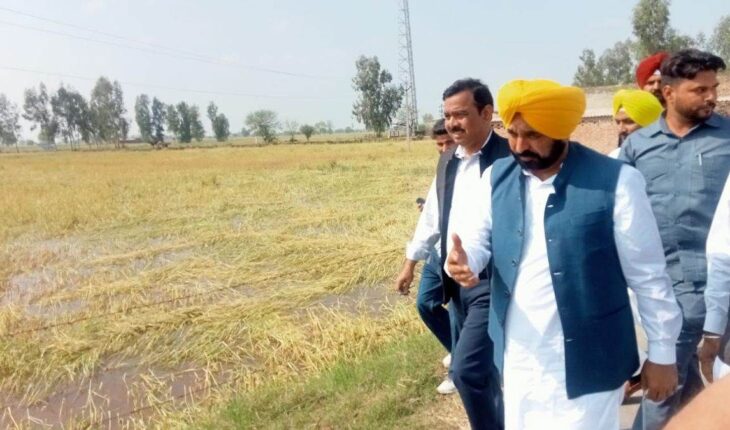There has been buzz on native seeds and indigenous agriculture in Punjabi News headlines as well as Hindi News Live headlines for the past couple of months.
While Punjab experiences an ongoing ecological emergency — from declining groundwater levels to deteriorating soil health — a quiet revolution is silently happening in its fields.
More and more farmers are abandoning high-yielding hybrid seeds in an effort to go back to native traditional crops that ruled the landscape before the Green Revolution. But will such native crops actually restore sustainability to Punjab?
Why the Return to Native Seeds?
Punjab was India’s food bowl for decades, courtesy of the Green Revolution of the 1960s and ’70s. But excessive application of chemical fertilizers, pesticides, and water-hungry hybrid crops like paddy and wheat created a green revolution of a different kind: an environmental meltdown. Soil quality dipped, groundwater plummeted, and biodiversity reduced. This catastrophic situation has been a repeat feature in Punjabi News and Hindi News Live shows on Punjab’s agrarian crisis.
And now, indigenous seeds — such as desi bajra, makki, til or sesame, chana, and kala moong — are being rediscovered. They are more suited to local climatic conditions, consume less water, and are resistant to pests naturally.
More importantly, they do not rely as heavily on chemical inputs, so it is organic and sustainable agriculture that they are well suited to by nature. Their revival not only promises healthier soil and better yields in the long run but also reconnects farmers with traditional knowledge systems that once sustained rural livelihoods and ecological balance across generations in Punjab’s fertile plains.
Voices from the Ground: Farmers Leading the Change
One of those success stories is that of Moga district farmer Jarnail Singh, who switched to traditional varieties of millet five years ago. “I was paying more in pesticides than I was earning in profit.
Switching to traditional crops turned things around,” he said in an interview to a Punjabi news portal recently. Singh cultivates kodo, kutki, and til, and sells them through local organic cooperatives.
Organizations such as Navdanya and Kheti Virasat Mission are themselves encouraging farmers to adopt indigenous seeds and become familiar with regenerative farming methods.
A string of farmer success stories on Hindi News Live have illustrated a range of accomplishments where yields were better with smaller holdings — all thanks to the premium demanded in urban India’s organic, native grains.
Challenges Along the Way
While people are being made excited about going back to indigenous seeds, it is not straightforward. First of all, there is the lack. The majority of the indigenous varieties of seeds were obliterated or driven underground due to the Green Revolution. Farmers today have to depend on seed banks or other organic farmers to bring them back into use.
Secondly, there is the issue of market access. Consumers in urban areas, while coming around to millets and organic pulses, still maintain fragmented supply chains.
As explained during a recent Hindi News Live panel discussion, distribution and procurement networks must be funded by the government in order for such crops to be commercially viable.
And also, farmers are not ready to shift from wheat and rice, which remain the dominant crops under the Minimum Support Price (MSP) regime, whether subsidized by the government or not. Unless state policy also shifts in that direction, native seeds would be a niche product at best, surviving only through small-scale initiatives and conscious consumer demand.
A Path Toward Sustainability
Though there is skepticism, the trend is picking up. 2023 has been announced as the International Year of Millets, and Punjab too witnessed a 30% rise in millet cultivation.
Certain studies reported in Punjabi News channels have discussed the health benefits of these crops, particularly combating increasing instances of diabetes and obesity in Punjab.
From the environmental perspective, millets and pulses consume 70% less water than rice. They also provide natural nitrogen fixation to enrich soil quality and promote crop rotation — all important to reversing the environmental degradation in the past decades.
Conclusion: Sowing Seeds for a Better Future
While Punjab is staring down the barrel of climate change, the revival of indigenous seeds is not only an emotional roll-back — it’s a requirement.
The increasing traction on Punjabi News and Hindi News Live websites is playing an active role in educating farmers and consumers. Through detailed reports, expert interviews, and grassroots success stories, these platforms are creating awareness about the long-term benefits of traditional crops.
They highlight how native seeds can help restore soil fertility, conserve water, and ensure food security, while also encouraging policymakers to support farmers in making this vital shift toward sustainable agricultural practices.
Though the path to widespread acceptance is long and fraught with infrastructural and policy problems, the rewards — environmental, dietary, and economic — are clear. With the right incentives, Punjab’s native crops can be the foundation for a fresh, sustainable green revolution.
For more such stories from the ground, stay connected with Punjabi News and tune into the latest debate on Hindi News Live.

